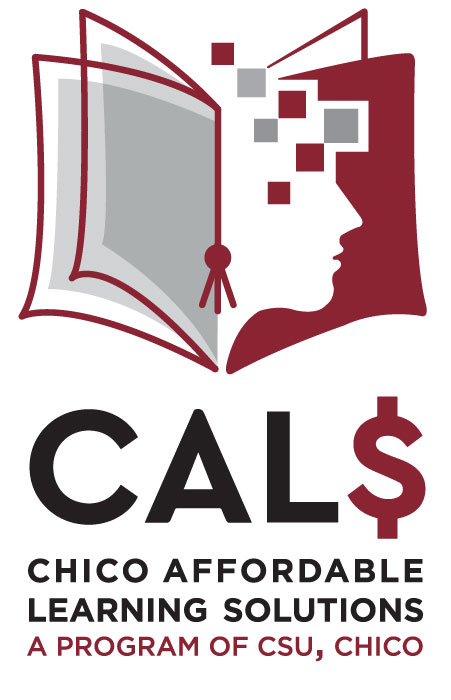CSU Affordable Learning Solutions(opens in new window)

Rachel Teasdale
Geological & Environmental Sciences
CSU, Chico
Fall 2016 TAP3
In fall 2016, I replaced the required textbook, Mineral Science by Cornelius Klein and Barb Dutrow ($223.00) and an optional textbook, Rocks and Rock Minerals by Richard Dietrich & Brian Skinner ($112.00) with online resources in the GEOS 306, Mineralogy and Lithology. Online materials include fundamental reference materials students use to identify minerals as well as readings relevant to course topics.
GEOS 306 is one of the first upper division major courses students in Geology (and some Environmental Science programs) take. Nationally, courses equivalent to GEOS 306 is a combination of two courses, one on Mineralogy and another (one or more) on Lithology (the study of rocks). At CSU, Chico, the combined course allows students to learn the identification of minerals in the context of the rocks in which those minerals are found. This provides students with fundamental information that helps form the foundation of their subsequent coursework, particularly a field course students take in the spring following GEOS 306. The downside of the combined course is that there are few textbooks to use for the course. Until fall 2016, I have tried several textbook options, and more recently, I have used the combined required and optional books, which can cost students up to $335.00. With approximately 20 students per year in this course, the TAP program saves students a total of $6,700.00 per year.
Given that the discipline of mineralogy goes back centuries and that the data we use in the Klein & Dutrow textbook was published in 2007, the basic reference information we use to identify the physical and structural properties of minerals remains largely unchanged. Recently, a white paper produced by participants in a NSF-funded workshop, Reconsidering the Textbook, suggested that textbooks of the future should be flexible, easily searchable and with flexible electronic interface (Bierman et al., 2006; available at: serc.carleton.edu(opens in new window)). An obvious solution for the mineralogy-based content of the GEOS 306 course was to replace the expensive static textbook with online resources that capture the same basic reference information (e.g. physical properties of quartz).
Students were referred to several Websites and databases with mineral data information that can be accessed for free and the “official” identification tables to use for the course came from the Mineralogical Society of America, http://www.minsocam.org/(opens in new window). Students could access the tables online or with hardcopies, depending on their preferences. One set of tables was printed for students to use on exams (comparable to the printed “exam copies” of tables used in previous years). The identification tables help students organize their observations of mineral properties into identification of the minerals. In many cases, tables are used to narrow identification to the final mineral, but in most cases tables narrow the options to multiple options and subsequent information is needed for final identification. In past years, students used more detailed written descriptions of minerals to confirm the identification, but without a textbook, students were advised to use the Mineralogical Society of America website to do so. In practice, students tended to use a variety of websites for final identification, or relied on web-based images of minerals to try to complete their identification.
Reading assignments were challenging to compile because, like textbooks, they were written for traditional mineralogy courses. The materials I did provide were probably more focused than previous reading assignments I selected from the textbook, but if used again, will need additional editing as some information was more than what students need or are written specifically for an author’s course so need more context for my students.
In a mid-term informal survey, most students indicated they preferred not having a required textbook, but one student who was re-taking the course indicated that of the two methods he experienced, he preferred having a textbook. Another student was extremely frustrated with not having a textbook with which he could look up more detailed information and did not like using online resources for his “research” on minerals. I provided information about the previously used books to students who asked and this student did purchase the Mineral Science textbook (Klein and Dutrow, 2007). A post-course survey will provide additional feedback on students’ impressions of the course without a textbook.
My own observations include that without the textbook, weekly readings I compile specifically for the course are more focused but require additional editing for future use. In terms of mineral identification, without a textbook students generally overly trusted websites and especially images of minerals they found with basic web searches. In general, students either didn’t critically assess the reliability of the websites they used or didn’t have the experience to know how to do so. An ideal pathway forward would be to purchase a class set of older versions of mineralogy textbooks with reliable mineral identification tables and detailed information, which doesn’t change in new editions of textbooks (currently available for $10-$60 each) and continued revision and use of online resources for reading assignments.
Project Summary: Initial proposal idea: to replace the required and optional textbooks for GEOS 306 to reduce the cost of the course for students.
Savings: The required book costs $223.00 from the publisher and the cost of the optional book is $111.95 from the publisher, so each student might have spent $335.00 for the books for this class. In fall 2016 students did not have to purchase any book, for a potential composite savings for the 2016 students of $6,700.00.
Copyright: I have only provided materials available for free use online.
Accessibility: I have provided links to written materials online and have offered that students request alternative materials as needed, but none of have asked for alternative formats.